You can use the free
SiMetrix Circuit Simulator to run
My Simulations. Or you can use my observations, tips and techniques - to help you create a suitable file for a different simulator programme. If you do decide to create your own simulation - it's still worthwhile downloading SiMetrix - just to compare my results.
In what follows - I've concentrated on describing the Timer No.1 simulation. But the Timer No.2 simulation is very similar. And you will find both simulations in
This Small Download.
SiMetrix Screenshot
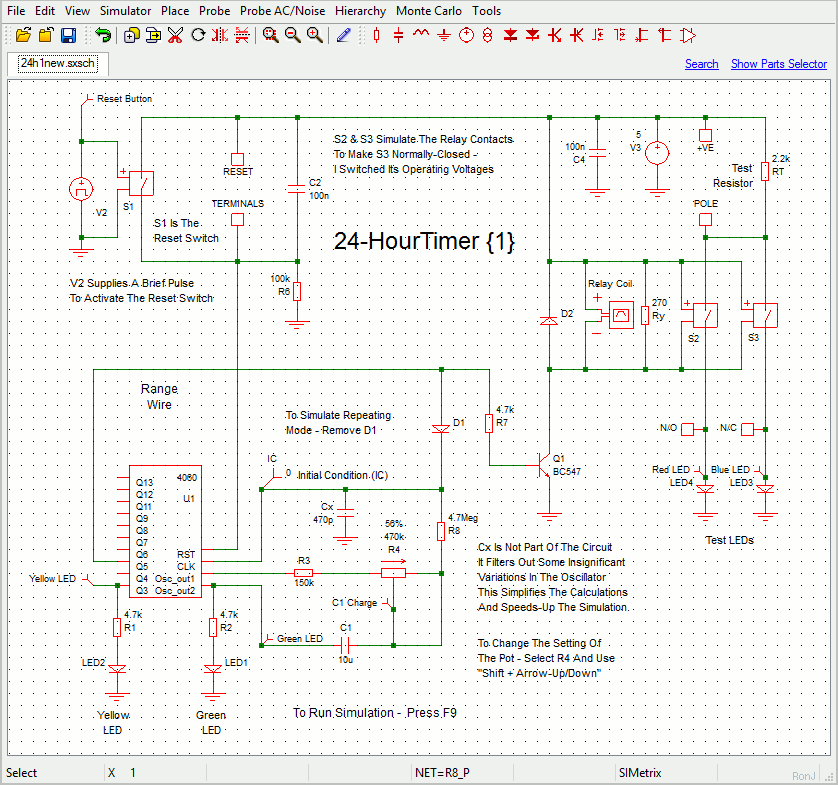
The circuit uses a small single pole relay - such as the Omron G2E. The coils of these low voltage DC relays behave just like resistors. I've used a 270 ohm resistor (Ry) to simulate my relay coil. The Differential Voltage Probe measures the voltage across the relay coil. And the state of the relay is determined by the level of that voltage.
The graph below shows that after five minutes (300 seconds) - when the Yellow LED switches-off for the second time - the relay energizes. The relay contacts (S2 & S3) change over - the Blue LED switches-off and the Red LED lights.
Graphs
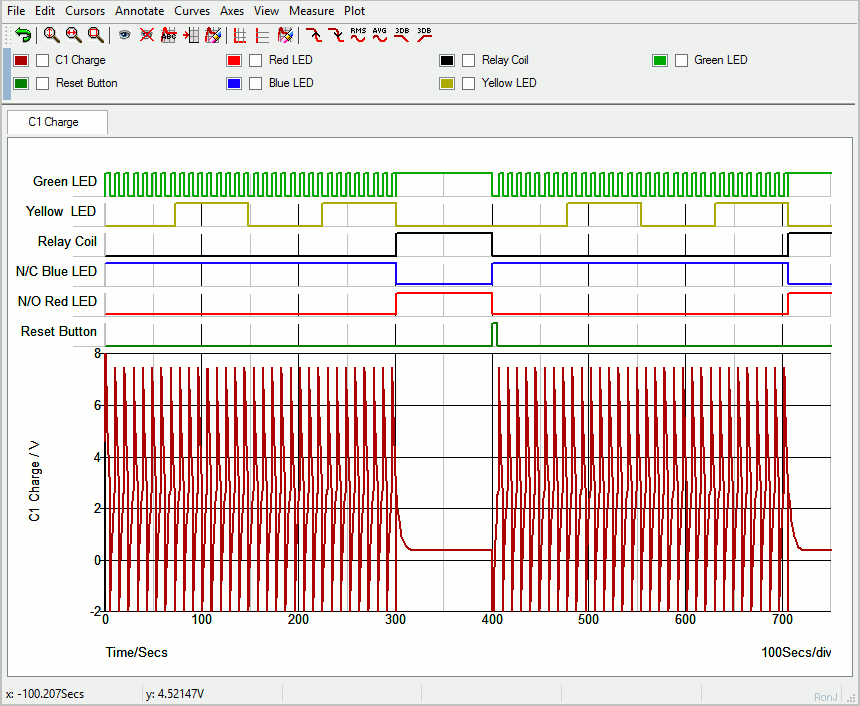
When the relay energizes - the oscillator (count) stops. The relay remains energized until (at 400 seconds) the Reset button is pushed. The Reset button de-energizes the relay - resets the counter to zero - and starts the next five-minute delay.
The S1 Control Pulse (V2)
The reset button (S1) is controlled by a waveform generator (V2). After an initial delay of 400 seconds, the generator produces a single 5v output pulse - and S1 switches On for the duration of that pulse. The 4060 can be reset virtually instantaneously. So a much narrower pulse-width would have been sufficient. But - in order to make the pulse clearly visible on the graph - I set it to five seconds.
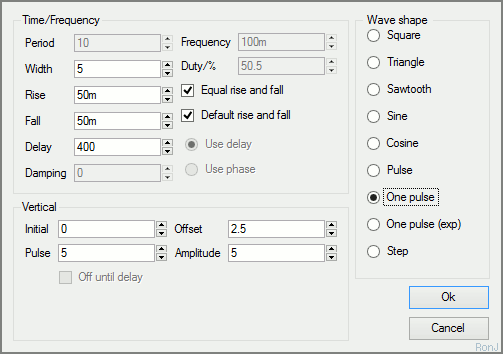
SiMetrix Switches Are Analogue Devices
S1 doesn't open and close like a regular push switch. Instead - it has both an ON resistance and an OFF resistance. The default OFF (open) resistance is 1 Meg. In order to make S1 behave more like a regular push switch - I increased its OFF resistance to something that more closely resembles an open circuit.
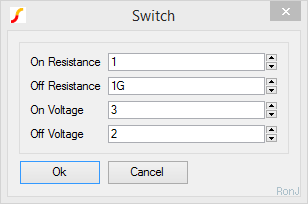
Analysis Settings
The analysis is straight forward. The "Mode" should be set to "Transient". And the "Stop Time" should be long enough to allow the timer to complete a few cycles. I set it to 750 seconds.
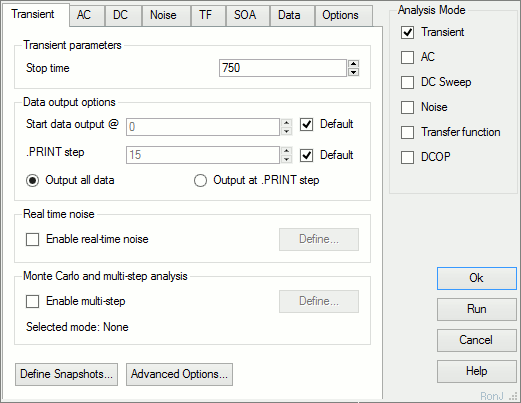
SiMetrix uses your choice of "Stop time" to calculate some of its default settings. Here the stop time figure is relatively high. And one of the resulting default values - the minimum time step - is too high to allow the simulation to run successfully.
You'll find the minimum time step setting - under the "Advanced Options" button. For present purposes - provided it's short enough - the actual choice of minimum step length is not important. So I set a really short five picoseconds - effectively removing it as a parameter.
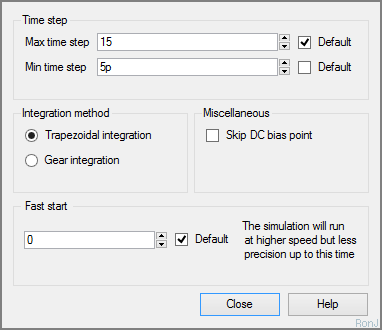
Why Is The Simulation 5-Volts?
The Cmos Models that come with SiMetrix are designed for a 5-volt supply. So I've set up a 5-volt simulation. But the circuit itself will work from 5v to 15v. All you have to do is choose a relay - with a coil that will work at the voltage you want to use.